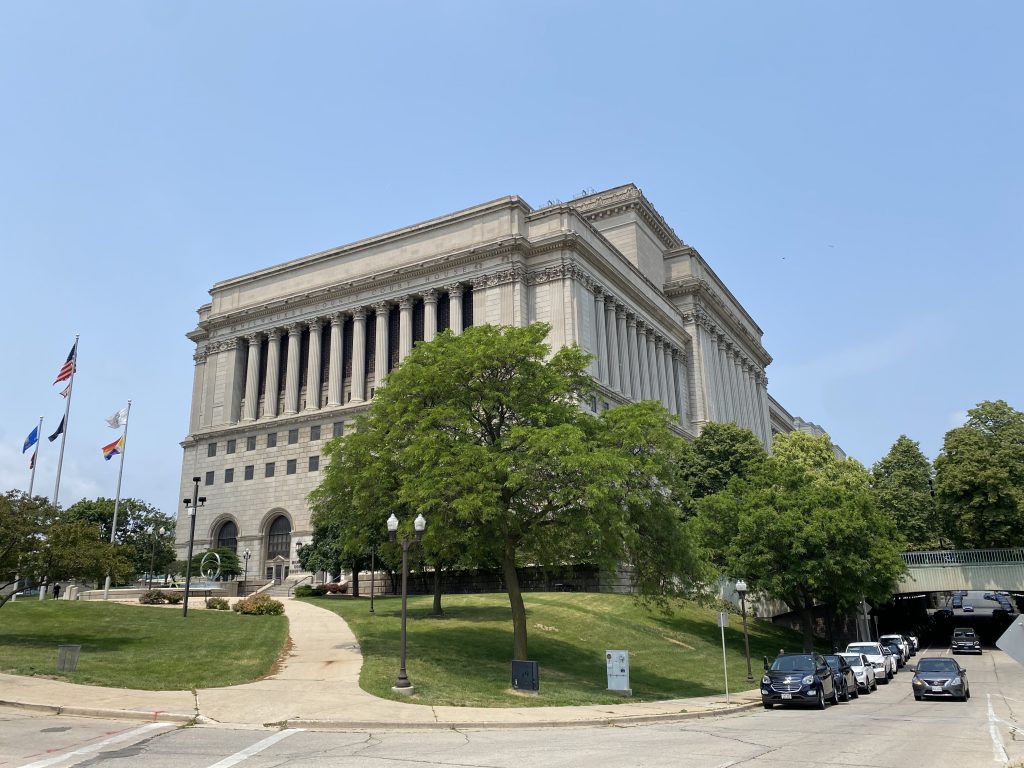How State Has Slashed Milwaukee County’s Funding
County would have gotten $1 billion more since 2003 if funding kept up with inflation.
A new analysis by Milwaukee County staff and requested by Urban Milwaukee shows that state aid to this county has fallen abysmally in real dollars over the last 22 years. Had the funding simply kept up with inflation, the county would have received an additional $1 billion over that period.
The annual shortfall in real dollars gradually increased, from $2.2 million in 2003 to $14.4 million in 2010, then spiked to much higher levels once Republicans took over the state Legislature, surpassing $52 million in 2013 and hitting $129 million in 2022 before dropping to about $103 million in 2024, after the Legislature increased state shared revenue payments as part of the 2023 law, Act 12.
“We could be receiving $100 million more year after year if funding had kept up,” said Milwaukee County Executive David Crowley. “This has really stymied us from paying for local services. We’re talking about public transit and buses and our parks and other services that have gone without funding.”
Act 12 also allowed Milwaukee County to increase its sales tax by .04% along with an increase in state aid. “That did give us more financial flexibility,” Crowley said, but still leaves the county paying 80% of the cost of state-mandated services, “which quite frankly is too high.”
County governments in Wisconsin and most states operate as local administrators of state-mandated programs like the judicial system, corrections, transportation and health and human services, but the state has never paid the full cost and the portion it pays has declined since the late 1980s. In essence the partnership between state government and Wisconsin’s 72 counties has been broken as the Legislature welches on supporting these programs.
State funding of county services in Wisconsin fell from 46% of total county revenues in 1987 to 26% in 2019, but “much of the decline occurred between 2009 and 2019,” a 2021 study by Forward Analytics found. Only Minnesota and New Jersey cut funding to the counties by a greater rate than Wisconsin during this period, the study found.
Much of the state funding goes for health and human services programs, according to the study’s author Dale Knapp, and cuts in that funding have a great impact on counties with more poverty and elderly residents. “And that’s a particular challenge for Milwaukee County,” he has noted.
Another category of state funding to the county, mass transit assistance, also has more impact on Milwaukee and other cities who operate bus systems. Considering Wisconsin is among the leaders in America for state funding cuts to the counties, Milwaukee may well be one of the hardest hit counties in the nation. And that was as of 2021: state aid to Milwaukee County has declined since then by about 30% in real dollars.
“We’ve been living the consequences of Republican disinvestment for years,” said Milwaukee Democratic state Sen. LaTonya Johnson, a member of the Legislature’s all-important Joint Finance Committee, in a statement to Urban Milwaukee. “Every time they cut funding, we’re the ones left cleaning up the mess. Then they point fingers and act like it’s our failure. A billion dollars would go a long way toward fixing roads, running buses, and keeping our community safe.”
As Urban Milwaukee has reported, the county has a $1 billion backlog of infrastructure and maintenance needs, and the parks system accounts for 50% of that. The Milwaukee County Transit system will have to eliminate 25% of its service in five years without new or restored funding. The county jail has constant problems exacerbated by inadequate staff and a deteriorating facility.
Meanwhile the county has had to put off construction projects like a new Safety Building, which was built in 1929 and has long needed to be replaced. That has greatly increased the construction costs, Crowley notes. The price tag is now estimated at $500 million, up from $170 million nine years ago.
There is little local money for any of this because so much of the county’s property tax levy, its main revenue source, finances state mandated programs. “It’s unsustainable for us to use our local tax dollars for almost all of the state mandated services,” Crowley says. “We are going to continue to insist on more of a partnership with the state.”
Crowley hopes to work with other counties to push this issue. “We’re seeing other counties across the state talk about this.” He points to Waukesha County, which has complained that 44% of its local tax revenue goes to pay for state-mandated services, which is a much lower portion than Milwaukee pays yet still problematic for Waukesha.
Crowley is lobbying in Madison, trying to sell the idea of a greater partnership with state government, and remains optimistic, but meets up with familiar responses from legislators, that it’s a “cash grab” for Milwaukee. “There’s always this idea that all they do is take, take, take,” he notes.
When in reality the county’s taxpayers pay ever more in income, sales, excise and utility taxes to Madison, while state aid has gone down, as a past analysis by the county has shown.
Crowley notes that Milwaukee County is treated differently than any other county, with unique costs only it pays. Only the sheriff’s deputies in Milwaukee must patrol the county’s highways and expressway; in the other 71 counties the state patrol handles that. That’s a cost of $17 million per year for Milwaukee County, which gets just $1 million per year in state funding for this, he estimates.
Milwaukee is also the only county required to run the Community Reintegration Center (former House of Correction) for the state, which costs some $65 million per year. “We are reimbursed by the state at a rate of $60 per day [per inmate] and it costs us $145 per day,” Crowley notes. That’s just 41% of the costs.
When Crowley or county lobbyists meet with legislators, “we hear from some of them, we don’t want to treat you differently than other counties,” Crowley notes. “They don’t want to make the system unfair. And we are saying, ‘we agree, we want to be treated equally.’”
Considering just the cost patrolling the freeway, that could gain Milwaukee County another $15 million a year.
“We shouldn’t be relying on the property tax for pay for state mandated services like that,” Crowley says. “Especially when the state is sitting on a $4.3 billion surplus.”
If you think stories like this are important, become a member of Urban Milwaukee and help support real, independent journalism. Plus you get some cool added benefits.
Political Contributions Tracker
Displaying political contributions between people mentioned in this story. Learn more.
Murphy's Law
-
Can Democrats Win More Rural Voters?
 Jun 18th, 2025 by Bruce Murphy
Jun 18th, 2025 by Bruce Murphy
-
Trump’s Flip-Flop on Immigrants Impacts Wisconsin
 Jun 17th, 2025 by Bruce Murphy
Jun 17th, 2025 by Bruce Murphy
-
Reading Instruction Program for Milwaukee Teachers a Great Idea
 Jun 11th, 2025 by Bruce Murphy
Jun 11th, 2025 by Bruce Murphy























Excellent article and excellent timing! The State gives Milw Co special status as a Class I county which is defined as a county with over 750,000 population, Over a decade earlier, the definition used to be 500,000 population, but when Dane County was nearing this population, the definition was changed so that Milwaukee continues to be the only Class I county. The State uses this definition to discriminate against Milwaukee County residents. On top of this inequity, the state has also reached into the county Contingency funding to force payments to the Stadium (Am Fam Field ) and the new arena (FiServ Forum). When the long arm of the State Government grabs the county contingency funding, our Parks and Transit budget is cut. Local services are being sacrificed for the glory of the state, and the betting tools of the Oligarchs in big sporting games. Enough is enough, it’s time to demand our fair share as is required in the State Constitution.
I know it’s no relation, but sometimes I think Milwaukee should have told the Republican Party to ‘go fish’ when they asked to have their convention here. It doesn’t relate, but they don’t play fair.
Out state democrats were not all that lovey towards Milwaukee County either. We are an island within the state AND the metro area. Transit is not a state mandated service… I am not hopeful that it’ll go back to what it was. If might be time to re-think how and to what levels transit is administered within the county.
An amazing deep dive.
I hope Crowley’s lobbying works and reaches the right ears.